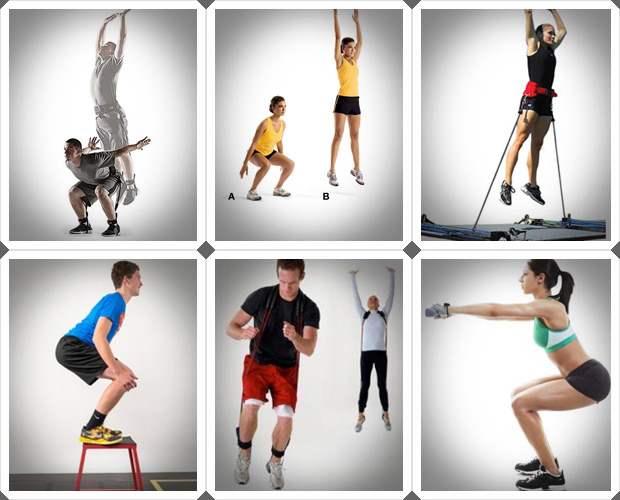Vertical jump training has become excessively intricate. Athletes are resorting to radical weight training techniques, jumping strength shoes, power jumpers, and all manners of plyometric training equipment to make gains. While these methods and devices are important in training for a more powerful vertical, too many athletes are opting for expensive toys before taking advantage of the most basic and effective training method available.
Before starting training regimes with equipment designed for advanced jumpers, athletes really need to practice jumping with good mechanics. The easiest way to improve vertical jump height is to jump more. After all, a strong vertical jump has a lot to do with developing coordination and strong neural signaling to relevant muscles, and practicing an action is the straightest path to this development.
Good Vertical Jump Mechanics – The Countermovement Jump
Before you start practicing the vertical jump, you need to learn the basic technique. Start by standing relaxed with knees slightly bent, and raise your arms out in front of you. Simultaneously swing your arms down, push your hips back into a squat, and bend your knees; the squat needs to be quick to load the legs properly, and swinging the arms is helpful in achieving this. This countermovement squat produces a lot of elastic energy, but it all dissipates within seconds. To take advantage of the stored energy, explode out of the squat position as quickly as possible.
Often, athletes think of jumping as a function of extension at the knees when in reality, multiple joints are involved. Remember to fully extend the hips by contracting the powerful glutes, and to use the power of your calves with complete ankle extension. Experiment with different squat depths to learn how you jump most effectively. A deeper squat usually takes more strength to explode out of, but can also produce a bigger vertical.
A Simple but Effective Vertical Jump Training Routine
Because a high vertical jump requires coordination and efficiency of the nervous system, muscles and tendons, frequently practicing the feat with proper form can yield amazing results. After a brief warm-up, try performing two sets of ten countermovement jumps, resting a few seconds between repetitions and two to three minutes between sets. To be really effective, every jump must be an all-out effort, so increase the rest intervals if necessary.
To increase the difficulty level, try countermovement jumps with one leg at a time. After the two sets of regular jumps, do ten repetitions with the left leg and ten repetitions with the right, using the same form. One-legged countermovement jumps really challenge balance and strength, producing even more impressive results over time.
Try this simple workout three to five times a week for a few weeks before incorporating more advanced techniques and training tools. Even the most advanced trainees can benefit immensely from one or two focused weekly sessions of this uncomplicated vertical jump training.



